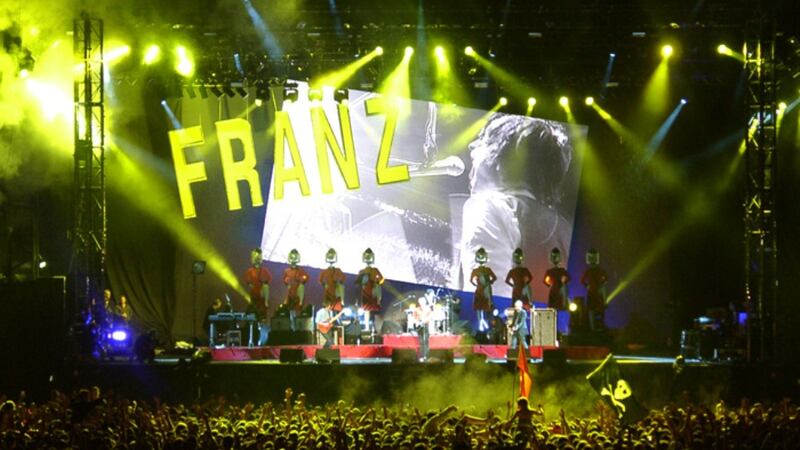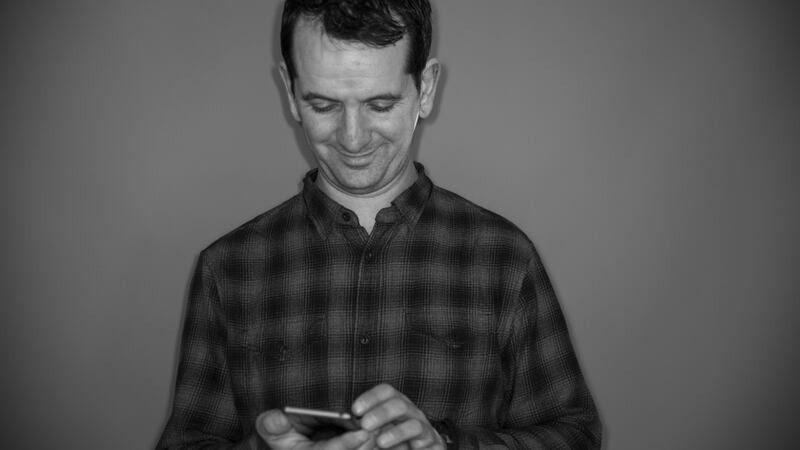As a lighting and stage designer for gigs and tours, Dubliner Cormac Jackson spends a lot of time in venues and a lot of time travelling between them. He has been responsible for designing and implementing light shows for Franz Ferdinand, Delorentos, MGMT, Queens of the Stone Age, Death Cab For Cutie and many more over his career.
Jackson's longest stint began in 1999 when he was offered a job with an upcoming artist that lead to 14 years of solid work. The artist? David Gray, just before White Ladder became the biggest-selling album in Ireland and before he became a worldwide hit. "That job basically put me on tour almost constantly until late 2003," Jackson says.
Jackson's first job working the lights was for his uncle's new wave band, The Atrix, in The Baggot Inn in the 1980s, where Jackson operated a rudimentary four-light system for a show. “So I suppose I can really blame him for everything that followed,” Jackson says.


Later, when his friends formed a band and created enough interest that fame was a possibility, Jackson didn't want to get left behind. Unable to play an instrument, he turned to the production end of things.
“The manager of the band put me in contact with a small local lighting company with a view to me learning,” he remembers. “My mates' band didn’t last very long but I stuck at it.”
New technologies
These days, Jackson's skills have developed beyond operating a row of lights to include the overall stage design incorporating the entire visual experience including set design and video. It was the advent of new technologies: LED screens, large format projections and LED lighting that facilitated the development of these new skills, as was the regular opportunity to use them on the David Gray tour.
“It opened a huge amount of doors for me in terms of contacts, experience and working with some very experienced crews. But it also forced me to come up with ideas and work with other touring departments, like set and video who I needed to work with if the shows were going to look right,” says Gray.
Designing sets for a tour, large or small, also means that the set needs to be portable, manageable and adaptable.
"What I try to do is add visual elements to a stage that I think are in keeping with the show," says Jackson of the challenges. "The designs need to be able to be installed relatively quickly, lightweight, easy to ship worldwide, modular so they can fit in both large and small venues and look good."
Finding inspiration
Inspiration for designs can come from anywhere or at any time on the road: art, architecture, photography, nature, fashion, film or books and Jackson cites "an old room divider in a book about 20th-century furniture," as a recent example of inspiration for a modular projection screen that would work in small venues.
“Sometimes an artist will have very specific ideas and it is your job to realise those ideas. Other times you have a blank canvas and you need to be able to come up with ideas but usually it’s somewhere in the middle.”
Jackson also does corporate work and recent clients include work on Guinness Amplify, Meteor Choice Music Prize and Jameson Cult Film Club. Corporate clients have larger expectations he says but there is possibility for a greater reward.
“You can be dealing with large companies who have several hundred staff in many several departments and you need to be able to communicate clearly to everyone quickly and efficiently,” he says. “The budgets are usually much larger than the average show which can give you scope to create and make something special which is always enjoyable.”
Jackson says audiences are acutely aware of how brand-sponsored events work and says such festivals and events shouldn't pretend to be “boutique” or more altruistic than they are. “The audience know, the bands know, the corporate sponsor knows, so why pretend it’s anything other than what it is and enjoy the relationship as best you can,” he suggests.
High lights
Jackson cites a Gorillaz show in the Apollo Theater, New York, in 2006 and Kate Bush's shows in London last year as examples of quality productions. The latter had many high points. "Bush had nothing to prove but raised the bar for any indoor live show," Jackson says.
In his industry, he namechecks stage designer Es Devlin, who was responsible for the London 2012 Olympic Closing Ceremony and Jay-Z and Kanye West's Watch the Throne tour among many others as an inspiration. "She has an incredible style and ability to create the most beautiful pictures."
As important as communicating with teams large and small is being creative with stage designs. Like Brian Eno, Jackson is an exponent of limitations in the creative process.
“Sometimes I find that limiting the amount of equipment or ideas can vastly improve how a shows looks: colour palettes, movement, lighting angles, types of lights or when it's used,” Jackson says. “Less is more.”
A little more bespoke
Jackson also tries to avoid whatever technology is currently popular in the industry in order to stand out. "Every other event/artist is going to have that same piece of technology for the next two years so I try and make my designs a little more bespoke and unique."
Sometimes, that means going further than hiring the equipment or relying on what's readily available. Sometimes, that means reverting to old technology.
“I found an amazing company based in a barn in Somerset who reconditioned and created these beautiful mirrored lamps that didn’t look anything I had ever seen,” he recalls. “They were part art installation and part lighting.”
What about when things aren't going right?
“Being able to ring someone who can help you when you least expect it is always going to be a help,” Jackson offers, before advising: “If you smell smoke, run!”







